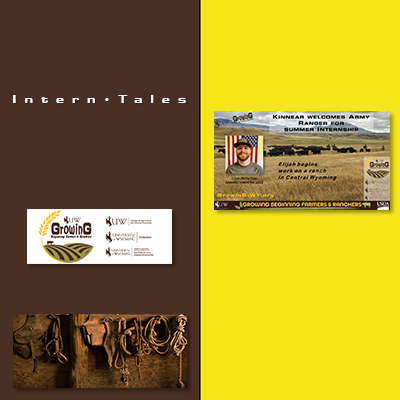A Good Ol’ Working Dog
#bfrdpwy #aginternship #RightRisk

During this week of the Growing-WY internship, we have successfully weaned all the bum lambs off milk and they are solely eating mineral and creep feed with Deccox added. We have continued to move sheep from grazing pasture to the feed bunks to supplement with corn. During this time, we have been deworming certain ewes that have presented themselves as a 3-4 on the Famacha scale.
Since we have successfully gotten all the bum lambs off milk, we have started to continuously keep an eye on their weight and body score in order to insure they are getting the proper nutrition. We have also been supplementing them with small amounts of alfalfa. The ewes have started to fill out and have become significantly more active, since we started supplementing them with corn. Due to the fact that we have not only been creep feeding the bums, but also the paired lambs, it has helped keep pressure off the ewes in order to control and limit mastitis in the flock.

An area I have been adding is my work with a working dog. The ranch has a working dog, George, whom I have been putting in a good amount of work time in with. I have been around many dogs in my life, from working K-9s to duck dogs, and I can say I have never met a dog quite like George. His ability to not only push sheep away but to also bring them in is astounding. In my time working with him and the sheep, I have been able to successfully bring the flock into the feed bunks multiple times to feed corn.

Furthermore, working with George has taught me a great deal in terms of proficiency when working sheep. Without him I would be chasing sheep all over the place! His ability to understand angles in approaching ewes, as well as his understanding of different commands makes a lot of my work easier.
Some questions I have this week are what age do you start training sheep working dogs? Also, can you work multiple dogs at once and what are the ways to communicate with one and not interfere with how you communicate with another? From asking these questions I have been informed that you can use different methods of sound to work multiple dogs at once. For instance, you could use whistles for one and words for another.
This last week has once again been an amazing experience as I continue to pack on more information and tools essential for success within the sheep industry. Working with George has demonstrated the necessity for having a working dog when working with or owning a large flock. I plan to use what I have learned about George to hopefully train a working dog and to be able to successfully move and push sheep from place to place.
Submitted by: Elijah Richardson
Edits by: GrowinG Internship Team

